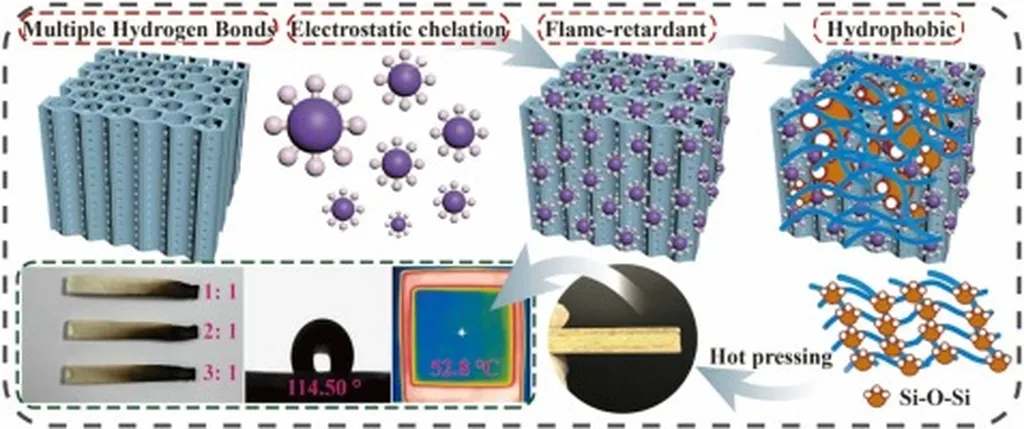In a significant stride towards sustainable construction materials, researchers have developed a lightweight, high-strength wood fiber/polypropylene composite foam that could revolutionize the industry. The study, led by Jiazheng Sun, was recently published in *eXPRESS Polymer Letters*, which translates to *Express Polymer Letters* in English.
The innovation lies in the use of nano-polytetrafluoroethylene (PTFE) to create a composite foam with enhanced properties. Traditional wood-plastic composites (WPC) have long been valued for their eco-friendliness and cost-effectiveness, but their high density and mechanical limitations have hindered broader applications. This new approach addresses these issues head-on.
The key to this breakthrough is the chemical foaming process enabled by nano-PTFE. “The addition of nano-PTFE significantly improves the crystallization and viscoelastic behavior of the composite,” explains Sun. This results in a finer cell structure with a 37.69% increase in cell density and a 29.45% decrease in cell size, leading to superior mechanical performance.
The impact of these improvements is substantial. When the PTFE content was optimized at 1 wt%, the composite foam demonstrated a tensile strength of 9.41 MPa, a flexural strength of 22.63 MPa, and an impact strength of 5.27 kJ/m². These values represent increases of 47.65%, 33.12%, and 76.23% respectively, compared to unmodified composite foams.
The implications for the construction, furniture, and packaging sectors are profound. “Given the mechanical robustness and low density of our composite foam, it presents a promising alternative to traditional wood,” Sun notes. The potential for reducing material costs while enhancing performance could drive significant advancements in sustainable construction practices.
This research not only highlights the importance of nano-PTFE in enhancing composite materials but also opens new avenues for exploring other nanomaterials in similar applications. As the demand for sustainable and high-performance materials continues to grow, innovations like this will play a crucial role in shaping the future of the construction industry.
The study, published in *Express Polymer Letters*, underscores the potential of advanced materials to meet the evolving needs of various industries. With further research and development, these composite foams could become a cornerstone of green construction, offering a balance of strength, sustainability, and cost-effectiveness.

